In early April of 1996, Joe Puryear and I set off from the Sheldon Amphitheater in the Ruth Glacier. Our objective was the 1954 Thayer route on Denali’s South Buttress. We encountered some skiers on our first day, and after that we did not see another person until 28 days later, when, a day after having reached the summit, we crossed over Denali Pass and descended to the 17,200-foot high camp on the mountain’s popular West Buttress route. The climb was an exquisite adventure that also catalyzed a long and productive climbing partnership. But the weeks of isolation and toil also helped us to master two of the most important lessons of Alaskan mountaineering and alpinism: survival and self-sufficiency in this harsh environment.
Twenty-two years later, ours remains the most recent ascent of the South Buttress.
In 2013, on the 100 year anniversary of Denali’s first ascent, I led an NPS patrol of the Muldrow Glacier, the route used by Denali’s pioneers. We were a week ahead of the only two other groups that had registered for the route. On our first day, we began wading across the McKinley River and left behind a class of students and park education specialists that had accompanied us on the initial two mile hike from Wonder Lake. Our group did not see another human until 17 days later, when we again descended from Denali Pass into the crowded West Buttress high camp. Along the way, we saw 3 brown bears, multiple moose and caribou, a fox, and some lonely tracks of the elusive wolverine. We forded two rivers; broke trail through wet snow and rain crust; found our way through two major icefalls; protected sections of exposed ridges; and dug-in protected camps wherever we felt was best. Then, on a day where over 75 people crowded onto Denali’s south summit, we stood alone on the mountain’s north summit, gazing down the 14,000 vertical foot precipice of the Wickersham Wall. We walked to the mountain, climbed up and over it, and went down the other side; just a group of close friends and the gear we could carry. It was the quintessential Alaskan mountaineering experience. These are but two examples of how isolation and solitude can be found on Denali, and on routes that present technical challenges that are comparable to the exceedingly crowded West Buttress.
While doing some research for a project last year, I found myself sifting through old cardboard boxes of archived climber registrations from the 1970’s and 1980’s. It was impossible not to notice the much wider variety of routes chosen by Denali climbers of the time, compared to today. For example, in 1987 alone, there were around a half dozen teams registered on each of Denali’s other prominent, moderate routes: the South Buttress, East Buttress, Northwest Buttress, and Muldrow Glacier. A quick look at several other folders from the mid 1980’s revealed a similar distribution. Elsewhere, routes such as Mount Foraker’s Archangel, Southeast, and Northwest Ridges, Mount Hunter’s Southwest Ridge, and even the remote unnamed peaks of the Ruth Glacier’s upper north fork were also seeing traffic. As with today, the majority of Denali climbers were registered for the West Buttress, but there was also a healthy representation of climbers attempting Denali’s other moderate routes. In general, these routes are longer and more logistically complicated than the West Buttress, with lengthy approaches, and in some cases, slightly greater technical difficulties. But none of them are technically difficult by modern standards, nor do any, with the exception of the East Buttress, have substantially greater objective hazards. They do, however, generally require more ingenuity, planning, patience, and determination, as well as a solid commitment to self-sufficiency, and, like any route, a willingness to fail and try again later.
The 1980’s were an interesting era for climbing in the Alaska Range. While moderate mountaineering was thriving, many of the range’s hardest routes were also established during this decade, including the Slovak Direct, Denali Diamond, and Isis Face on Denali, the east face of the Mooses Tooth, and the North Buttress of Mount Hunter. In addition, the testpieces of the 1970’s were seeing repeat ascents in alpine style, completing the transformation of the climbers’ consciousness from the slow, methodical, expedition style with its use of fixed ropes and stocked advance camps, to the lighter and faster- but somewhat riskier - alpine style.
The 1990’s and 2000’s ushered in further refinements to alpine style, making difficult routes that formerly took 5 to 10 days to climb, climbable in 1 to 3 days. This lessened potential exposure to the frequent storms of the region, even as it trimmed the margin for error in tackling long and committing routes with very little food and gear. This evolution also occurred as the emphasis and interest of the climbing and mountaineering community at large increasingly gravitated towards pure technical difficulty. The apparent result, combined with what seems to be an increasing emphasis on reaching the summit as quickly and easily as possible, was that the classic mountaineering routes of Denali - with the notable exception of the West Buttress - have been largely forgotten and abandoned. The last known attempt on the East Buttress was in 1994. Neither the South Buttress nor East Buttress have had a party register for an attempt since the 1990’s. The Northwest Buttress has seen a mere handful of ascents in the past 20 years. It’s also worth noting that the South Buttress and Northwest Buttress had a number of guided ascents back in the 1980’s and 1990’s.
In addition, corniced ridges - once a focus of the high end alpinists of another era - have also been avoided by modern climbers, relegating notoriously difficult but classically beautiful lines such as the South Ridge and Southeast Spur routes on Mount Hunter, the Ridge of No Return on Denali, and the French Ridge of Foraker, to forgotten testpieces. Unlike with ice and mixed climbing, rising technical standards have not made corniced ridges safer or easier. There is a nuanced combination of determination, commitment, patience, and tolerance for objective risk that is required for safely navigating such terrain. It is not for everyone, but it also seems that it is appealing to a smaller proportion of modern climbers.
Today, the overwhelming majority of Denali’s annual average of 1,200 registered climbers will be found on the West Buttress, with a small number of them additionally planning on attempting the Cassin Ridge or the Upper West Rib. In recent years, the Slovak Direct and Denali Diamond, two of Denali’s most extreme routes, have received renewed interest after going nearly 20 years without any repeat ascents. A handful of hopefuls may venture onto these difficult routes each year, but the chances of seeing another party on any other route on the mountain are near non-existent.
Why has this happened? In the past 30 years, there has been a dramatic increase in the overall number of people who climb. Route information has never been easier to access. Mountaineering - defined here as basic glacier travel, moderate to steep snow, and easy-angled ice slopes with little to no technical difficulty - is every bit as popular worldwide as it was long ago. Climber visitation has certainly increased on the more technical and lesser known peaks surrounding Denali. And yet, the range of moderate mountaineering on Denali has narrowed almost exclusively to the West Buttress. For better or for worse, this has had the additional effect of concentrating the bulk of environmental impacts along one specific route.
By early June in most seasons, there may be as many as 400 climbers occupying the 14,200 foot camp. At any given time between mid-May and early July, there are two to three ranger patrols on the route, along with a heavily wanded and (usually) packed trail, pre-constructed camp sites, fixed pickets along the ridge and the ascent to Denali Pass, and even 800 feet of maintained fixed ropes to protect the only technical climbing on the route. There are entire guide books devoted specifically to the West Buttress. Route-finding and trail-breaking are seldom required unless climbing in early season, or otherwise by the most motivated climbers immediately after a storm. “Group think”, especially at the higher camps at 14,200 feet and 17,200 feet, is common, with many climbers - too many, one may argue- gauging their decisions to go higher by the actions of others.
Most West Buttress climbers take away largely positive experiences, and rightly so. It is a beautiful route, and even the crowds can become a uniquely enhancing feature of the experience. Every season, the camps are filled with an international cadre of personalities and characters, each with their own styles, yet striving for similar goals. There are inarguably many conveniences in choosing this route. So much so, that one occasionally may encounter private climbing teams composed of individuals who literally just met in Talkeetna. Yet it could also be argued that the issue of convenience is relative, depending upon what one is ultimately seeking from their expedition.
Individual motives for climbing are varied, and the intent of this discussion is to help climbers choose an appropriate setting for their desired brand of adventure. In this spirit, I offer my own perspective as just one point of data to consider. I did not venture onto the West Buttress until my seventh season in the Alaska Range. By this time, I had moved on from basic mountaineering to more technical challenges, and like some, I was using the West Buttress to acclimatize for a more difficult route I intended to do. The Buttress is undeniably a dynamic social setting and an extremely scenic route, and of course it has all the same subarctic climate challenges as anywhere else on the mountain. It has proven a challenging ascent and a grand, lifetime achievement for generations of climbers. Yet, with these observations in mind, this season I look back on 25 years of climbing in the Alaska Range, and I am appreciative of having first learned the art of Alaskan mountaineering on the quieter glaciers and more remote satellite ridges of the Great One. I am certain that I learned much more from this course, even if it may have involved an increased level of risk and a lesser chance of reaching the summit. Indeed, it took three years of attempts until I did finally stand on top of Denali, and for me personally, the achievement was that much more rewarding when it was finally realized.
I have met many climbers through the years who chose the West Buttress as their first Alaskan route. Many already had the skills to attempt more difficult or more isolated routes, but chose the West Buttress out of the perception of convenience, or were simply unaware that there were other options that were well within their abilities. In retrospect, their views of this choice are occasionally mixed. I have heard it said: “If I had it to do over again, I might choose a different route or perhaps a different mountain”. Indeed, route selection should begin by clearly defining the character and flavor of the adventure sought by the team.
Therefore, teams of climbers who seek an all-encompassing representation of the ‘typical’ Alaskan mountaineering experience should understand that the West Buttress, for all of its qualities, is an outlier that might actually fall short of the team’s objectives. In fact, in high season, I would personally characterize the west buttress as a most atypical Alaskan mountaineering experience. In this regard, it is my view that self-reliant teams with well-practiced mountaineering skills and a resourceful, pragmatic attitude should consider deviating from the path of least resistance, and rediscover the lost classics of the Alaska Range. In doing so, climbers can more thoroughly tap into their creative and exploratory impulses, with the additional benefit of redistributing their impacts away from the heavily used West Buttress.
Regardless of one’s experience level and regardless of the route chosen, every climber should also consider that there is nothing inherently safer about the West Buttress, despite the presence of fixed protection, infrastructure and large crowds, which collectively have the potential to foster complacency and a false sense of security. It should go without saying that any route is only as safe as the skills, judgment and self-reliance of the team.
No matter which path one ultimately chooses, I encourage anyone coming to Denali National Park to look between the lines and find the treasures that the guidebooks tell you little or nothing about. There are near infinite possibilities here. As you retrace the steps of explorers past, each bend in the glacier and each mysterious undulation of the ridge ahead invoke heightened attention and a sensation that no one has ever been here before. In this increasingly developed world, the Alaska Range endures in resistance, harboring innumerable corners of stillness, little noticed by man and forgotten by time.
Finding those wildest of places is entirely up to you.
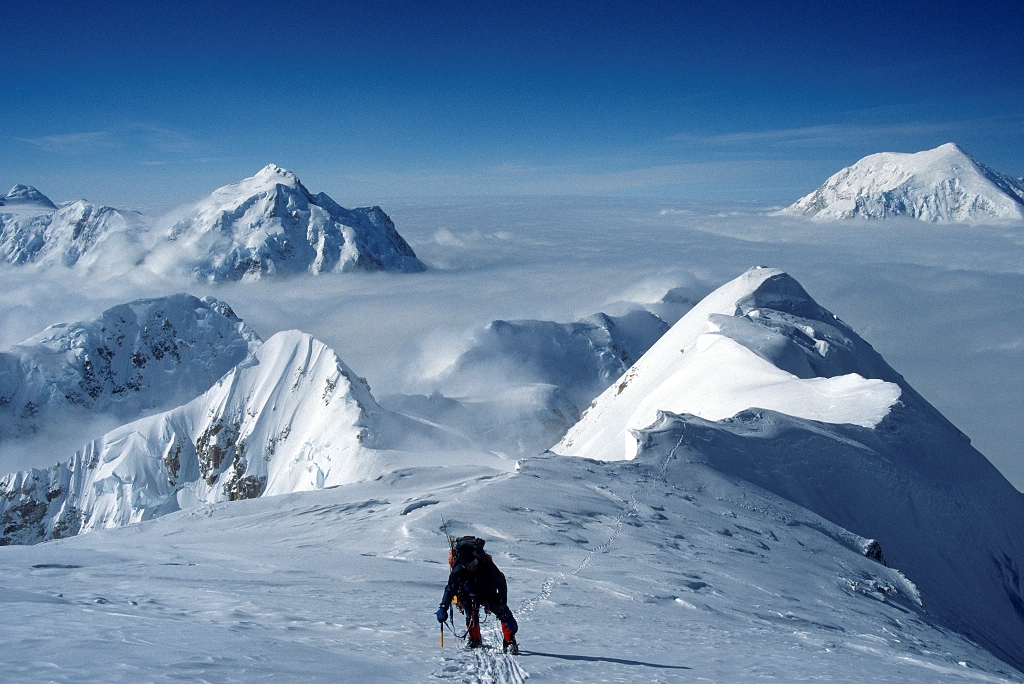
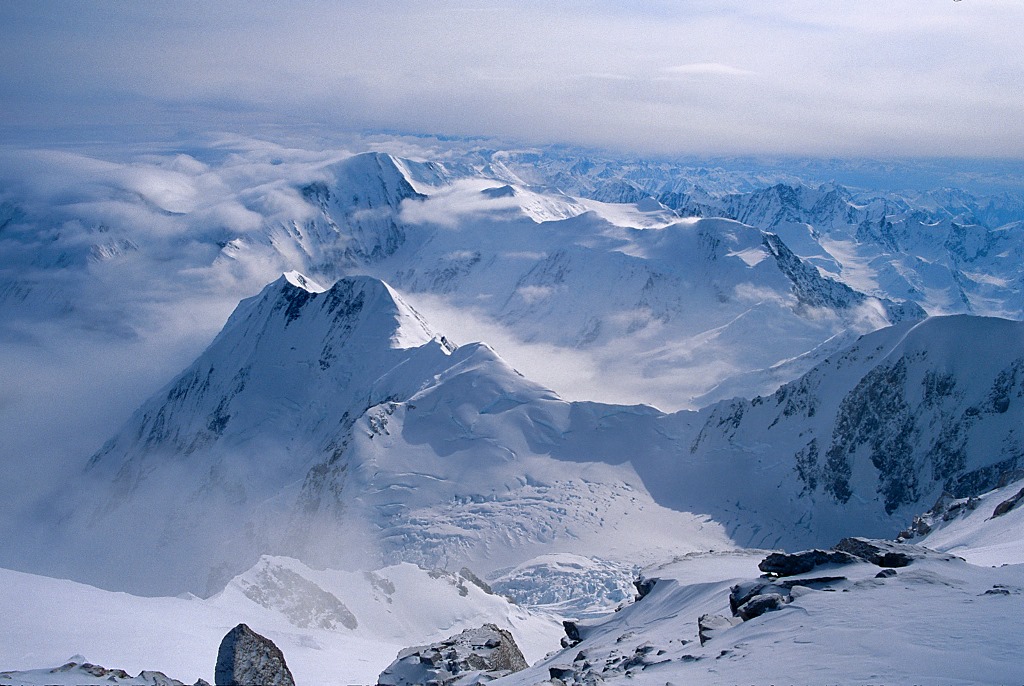 Looking down onto the Traleika Spur and Mount Silverthrone from 16,000 feet on Denali's South Buttress (Photo courtesy of Mark Westman)
Looking down onto the Traleika Spur and Mount Silverthrone from 16,000 feet on Denali's South Buttress (Photo courtesy of Mark Westman)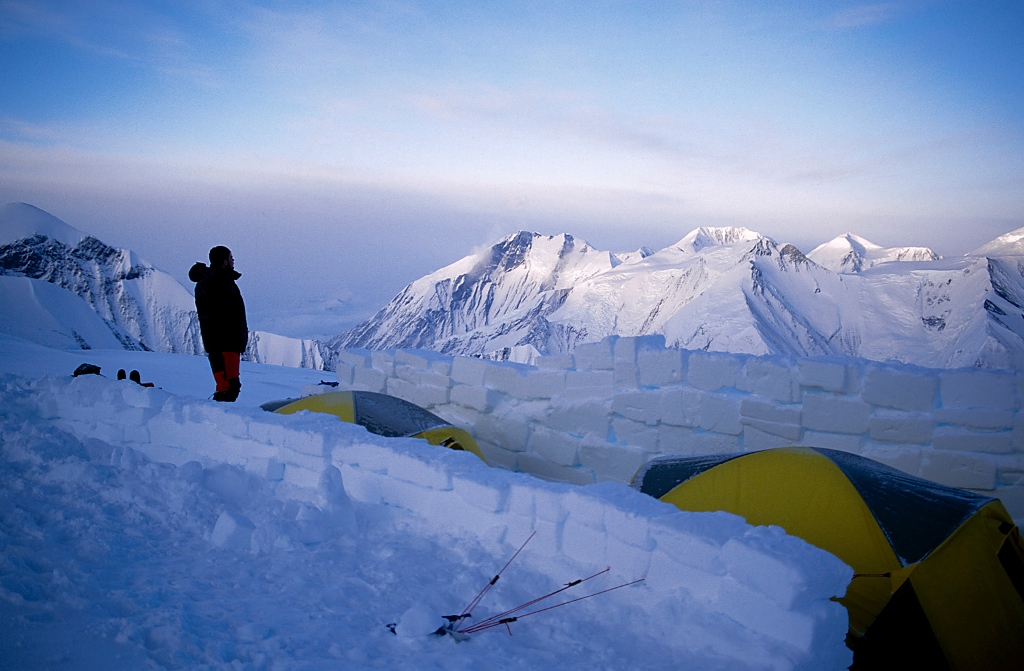 A fortified camp at 12,200' on Karstens Ridge, Denali's Muldrow Glacier Route (Photo courtesy of Mark Westman)
A fortified camp at 12,200' on Karstens Ridge, Denali's Muldrow Glacier Route (Photo courtesy of Mark Westman)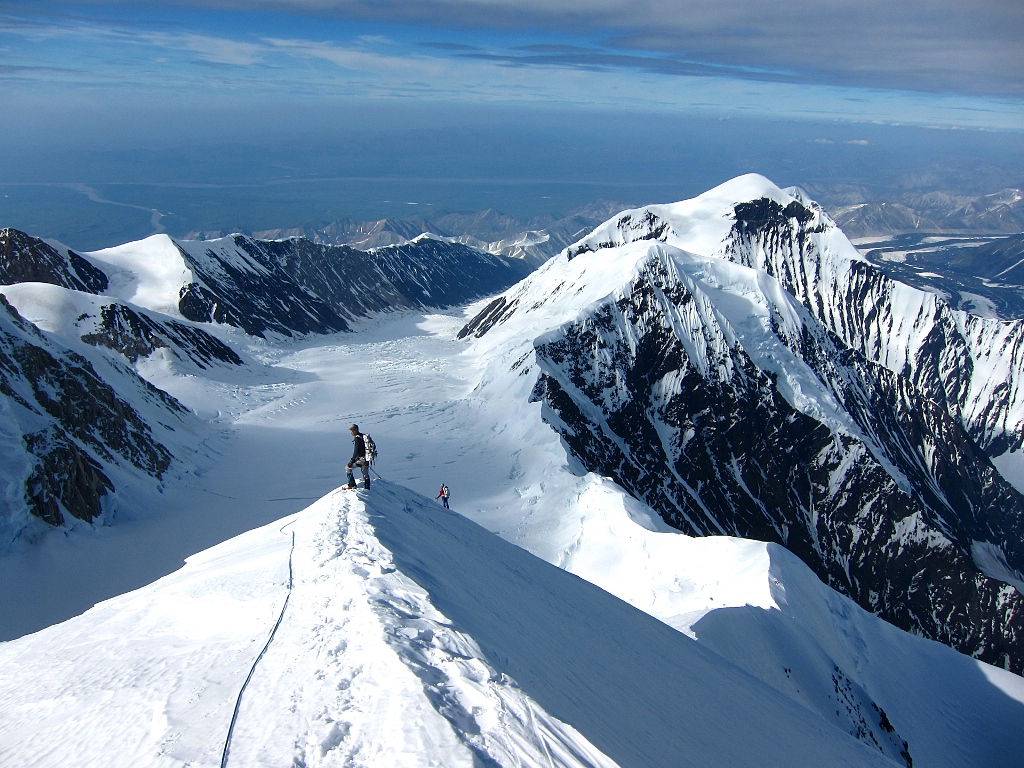 Climbers on Karstens Ridge, Muldrow Glacier Route, looking out towards the tundra north of Denali (NPS Photo - Mark Westman)
Climbers on Karstens Ridge, Muldrow Glacier Route, looking out towards the tundra north of Denali (NPS Photo - Mark Westman)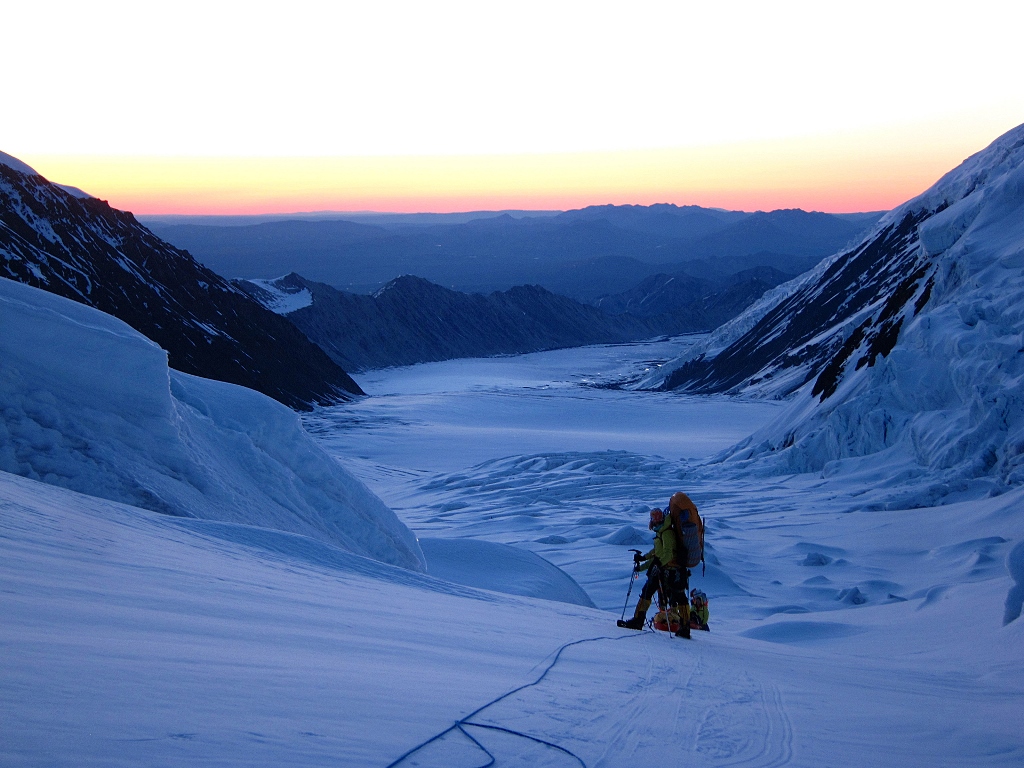 Finding a way through the Great Icefall on the Muldrow Glacier at 2 AM. (NPS Photo - Mark Westman)
Finding a way through the Great Icefall on the Muldrow Glacier at 2 AM. (NPS Photo - Mark Westman)